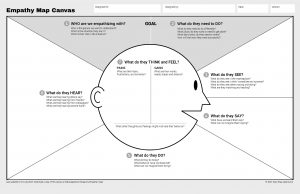2 The Stakeholder Landscape Concept
The Stakeholder Landscape Concept
 Map your stakeholder landscapes: understanding your social networks
Map your stakeholder landscapes: understanding your social networks
Because of the complex environment in which you likely operate I prefer to use the term stakeholder landscape when we are investigating the needs, wants and mindset of relevant stakeholders. By using geography terms, it reminds us that we need to keep our minds open and start with the big picture before we start focusing on specific people, teams, and other entities.
In any change situation, there will be people who are with you, indifferent and likely some opposed. As a change agent, you need to be very aware of what is going on around you. You have most certainly experienced change and change initiatives during in your careers, so you know exactly what we are meaning here.
I am sure that you all have either explicit or tacit capabilities in relation to stakeholders. I just want to give you a perspective I have gained after working in some tricky contexts and some very rich and open contexts.
We encourage you to keep the ‘people’ in mind when you are exploring your stakeholder landscape. We lump groups, teams and leadership bodies into the catch-all of ‘stakeholder’ and that tends to depersonalise our thinking.
- Regarding stakeholders, here are five key points:
- Stakeholders are people, groups of people, or elements that have been created by people.
- All stakeholders have a stake in the situation and context.
- The degree and relevance of their stake is related to the perspective of other stakeholders and their stake.
- The more complex the context and situation the more significant small things become.
A landscape metaphor helps the viewer navigate the many views in the stakeholder decision frame.

Here are some prompts that may be of use to you when you are considering your stakeholder landscape.
Questions
Here are some questions that those who are directly responsible for stakeholder understanding and engagement ask.
Which key stakeholders have power and influence? Why?
Why does this stakeholder group affect our organisation on behalf of whom?
What are the desires of key individuals in the stakeholder group?
How does this stakeholder group affect our organisation?
How powerful is this stakeholder group? What gives them this power?
What factors might affect that power in the future?
Who are you setting out to influence (the stakeholder/s)
What are the stakeholders thinking
What is my level of power and their level of power
What is the level of urgency for you and for the stakeholder/s
What is the respective level of legitimacy of all involved
What are the perceived urgency and the level of interest of the parties in the overall stakeholder landscape
Overall, what decisions and actions might the direct stakeholder team need to make? What it is that you intend to do as a result of knowing the answer to these questions?
Clearly, the answers to these questions also impact you and you have a part to play, however indirect that may be.
You might be wondering why the stakeholder landscape is so important to you and your project. Scratch the surface and you might see!
HINT: It works if you use an empathy mapping process as you work on your stakeholder landscape understaning. You will find details of the empathy mapping process in other sections of the Pressbooks content.

Activity
Describe a past situation or an upcoming one where you dealt with or will deal with stakeholders in a specific context for a specific reason and outcome. Probably it would be best to use your proposed project.
Name the stakeholder groups and also write a short description of the group/s.
Write a paragraph about the situation and context you want to examine. Be clear about the people and groups involved, the location, your role, your team’s role if that is relevant, the reason for the engagement, and specific points of interest that will highlight why this is important to you.
Overall, what do you conclude about your stakeholder landscape? What impact did it have or might it have one you and your team for the context and situation and the project you were considering in this exercise?
The power of this important insight is that it shows many players in a complex situation. As in ‘battle’, change or implemention project, you will want to have three-dimensional imagery to be able to shift focus and perspective to see things from many angles.
I find that using a ‘messy template’ helps to make more sense of the landscape than a typical ‘2×2’!
Here is one. At the appropriate time, I will share some stories. Stakeholder circle map

As a final point for this section, here is a view of an outcome of a crucial ‘social network mapping’ process that I sometimes use. It is a stakeholder landscape mapping analysis in disguise. I will tell you the story at the appropriate moment during the year!

A quick review of definitions
Here are some definitions for you. We want you to carefully read and consider these definitions as they will help you with the activities and also with your overall understanding of the dynamics of a stakeholder landscape.
Stakeholders
Individuals or groups who have interest or some other aspect of rights or ownership in the project, and can contribute to, or be impacted by, the outcomes of the project.
Stakeholder Landscape
The context, environment, situation and characteristics in which the stakeholders or stakeholder groups operate.
Influence
The change in a person’s attitudes, behaviours or beliefs due to external pressure or forces either real or perceived.
Power
Informal: The ability to get things done!
This may happen using the resources at hand and at times against resistance and the will of others.
Formal: The level of impact within a situation or organisation and ability to direct actions and outcomes. Power comes from multiple factors that can overlap: awareness of information networks within a context, the ability to control and direct information, as well as the impact of informal and formal structural positions.
Legitimacy
The perception or assumption that a stakeholder’s actions are desirable, proper or appropriate within the given context.
Urgency
The degree to which delay is unacceptable to the stakeholder, and the importance of the claim or the relationship to the stakeholder.
Interest
A focus on a concept, activity or situation that may become a focal concentration of attention. Interest groups are that are comprised of groups of individuals or organisations that share and magnify the focal concept.
Why do organisation put so much effort into their stakeholder relations and traditional stakeholder management? Make your way through the list of definitions above and consider why stakeholder understanding is so crucial to you, your teams.
References
- Bourne, L., & Walker, D. H. (2008). Project relationship management and the Stakeholder Circle™. International Journal of Managing Projects in Business.
- Brower, J., & Mahajan, V. (2013). Driven to be good: A stakeholder theory perspective on the drivers of corporate social performance. Journal of business ethics, 117(2), 313-331.
- Cialdini, R. B. (2001). The Science of Persuasion. Scientific American, 284(2), 76-81. www.jstor.org/stable/26059056
- Schultz, P. W., Nolan, J. M., Cialdini, R. B., Goldstein, N. J., & Griskevicius, V. (2007). The Constructive, Destructive, and Reconstructive Power of Social Norms. Psychological Science, 18(5), 429-434. https://doi.org/10.1111/j.1467-9280.2007.01917.
- Krackhardt, D. (1990). Assessing the political landscape: Structure, cognition, and power in organizations. Administrative science quarterly, 342-369.
- Wood, R. K. M. B. R. A. D. J. (1997). Toward a Theory of Stakeholder Identification and Salience: Defining the Principle of Who and What Really Counts. The Academy of Management Review, 22(4), 853-886
- Ibid.
- Yoho, J. (1998). The evolution of a better definition of “interest group” and its synonyms. The Social Science Journal, 35(2), 231-243.
- Hubbard, G., Rice, J., & Beamish, P. (2008). Strategic Management. Pearson Education.
